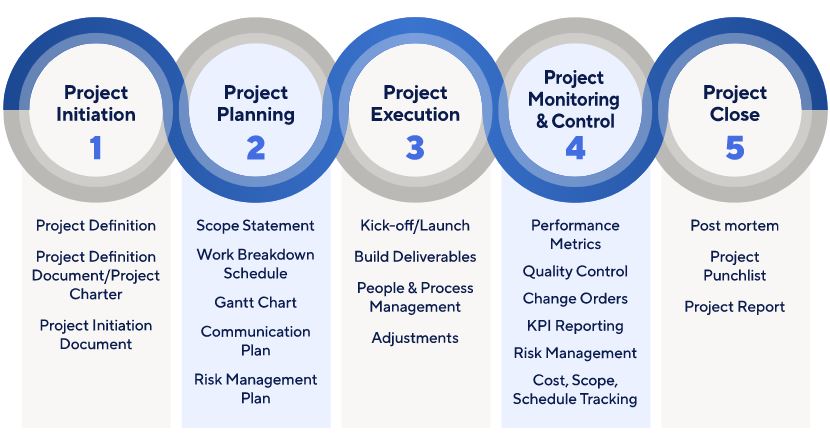What Is a Project? Start Your Success Right
Before diving into methodologies and tools, every aspiring project manager must first answer: What is a project? Without this clarity, teams may mistake operations for initiatives, lack direction, or fail to measure results. A proper understanding of what a project is—its definition, purpose, and boundaries—is the cornerstone of effective project management and the first step toward success in certifications like PMP®, CAPM®, or PMI-ACP®.
Why Proper Project Definition Matters
Imagine leading a team through months of effort, only to discover that the outcome no longer aligns with stakeholder expectations. The budget overshoots. The timeline collapses. And everyone wonders—what went wrong?
For many struggling projects, the root problem wasn’t bad execution. It was that the project was never properly defined in the first place.
Before we get into scheduling, budgeting, or managing risk, we must first answer the most fundamental question in project management:
“What exactly is a project?”
This question might seem basic—but seasoned project managers will tell you that ambiguity at this stage can derail everything that comes after.
What is a project?
According to the Project Management Institute (PMI):
“A project is a temporary endeavor undertaken to create a unique product, service, or result.”
Let’s break that down:
- Temporary: Every project has a clear beginning and an end. It is not an ongoing operation.
- Unique: Even if similar projects have been done before, the context, stakeholders, or desired outcome makes this one different.
- Outcome-focused: Projects exist to deliver something of value—whether it’s a mobile app, a new bridge, a marketing campaign, or an organizational change.
Projects vs Operations: A Common Misunderstanding
Many newer project managers or organizations confuse projects with operational work.
| Projects | Operations |
|---|---|
| One-time effort | Ongoing effort |
| Temporary | Continuous |
| Produces a unique output | Repetitive tasks |
| Ends when objectives are met | No formal end date |
Example from the field:
A PMP-certified IT manager shared this anecdote:
“We were asked to ‘project manage’ a monthly report creation process. But that’s a recurring operation. The real project was developing an automated dashboard to replace manual reports. We nearly wasted resources managing tasks that shouldn’t have been a project at all.”
Why Proper Project Identification Is Essential
Experienced project managers agree: bad projects often start with unclear definitions.
A misidentified project leads to:
- Unclear scope
- Vague stakeholder expectations
- Difficulty estimating time, cost, and resources
- A team that’s unsure what they’re trying to achieve
Real-world Scenario: The Rebranding Mix-up
In a mid-size marketing agency, a senior project manager (PMP) was tasked with managing a “brand refresh project.” Everyone assumed the project was a website redesign.
But after several weeks of development, the CEO clarified: the goal was to redefine brand messaging, not visuals. The result? Two months of wasted effort.
Lesson: If a project isn’t clearly defined, even the best teams can go in the wrong direction.
When to Say: “This Is a Project”
Ask these questions:
- Is there a defined start and end date?
- Will the outcome be something new or unique?
- Is it aligned with a specific business goal or strategic initiative?
- Is there a clear team or set of resources dedicated to it?
- Does it require planning, execution, and closure steps?
If you answer “yes” to most of these, you’re likely looking at a project, not routine work.
Identifying the Purpose Behind the Project
Once you’ve confirmed it is a project, define why it exists. What’s the business need? What value does it aim to deliver?
Project managers should never move forward without understanding:
- The business case
- Strategic alignment
- Success criteria
This forms the basis of your project charter and guides the planning process.
“A project without purpose is just busy work with a deadline.” — Senior Construction PM (PMP, 20+ years)
The Danger of Jumping In Without Clarity
Many real-world failures stem from skipping this definition stage:
- A construction firm began work on a building extension before finalizing zoning approvals.
- An eCommerce company developed new payment features before validating user needs—only to scrap the release.
- A healthcare project aimed to improve “patient experience” but never defined what metrics to improve, leading to confused goals.
Takeaways: Keys to Strong Project Definition
- Start with PMI’s definition – Understand that a project is temporary, unique, and purpose-driven.
- Differentiate from operations – Don’t waste project management practices on routine tasks.
- Clarify the business goal – Ask what the organization hopes to achieve.
- Talk to stakeholders early – Get clarity on expectations before planning begins.
- Document it – Use a simple project charter or scoping document to record everything.

What is a project life cycle?
Coming Next: Project Objectives That Drive Results
Now that we understand what a project is, our next focus is on defining clear, actionable objectives—the “what” and “why” that guide project success.
